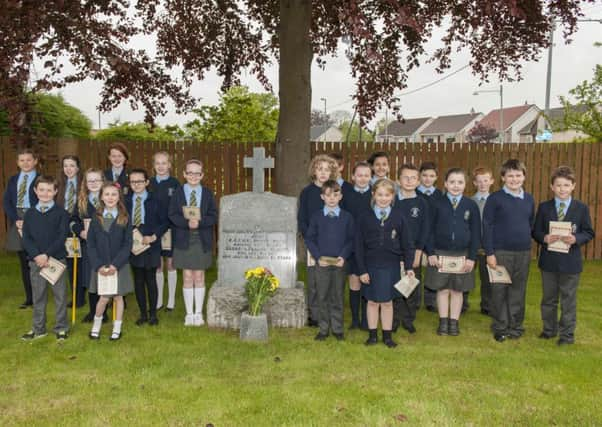Pupils pay tribute to Blackwood war hero


Until now, that is. The joint villages of Blackwood and Kirkmuirhill gave up many of their young men to the World Wars of 1914-18 and 1939-45.
They made the supreme sacrifice for their country in many ways and on many battlefields around he world, the majority falling with the infantry in the human ‘mincing machine’ that was the World War One trenches.
Advertisement
Hide AdAdvertisement
Hide AdHowever, one local young man who gave his life in service in the Second World War did so in what was a unique fashion for his area.
He was called John Hughes, the only son of Roman Catholic couple George and Frances Hughes, and was one of the many young men who sought to serve their nation in possibly Britain’s most glamorous - and dangerous - military formation, RAF Fighter Command.
Nearly all of those eager lads dreamed of some day flying an aircraft that was already a legend, the Spitfire.
Young John Hughes was, albeit briefly, one of the very few to achieve both these ambitions.
Advertisement
Hide AdAdvertisement
Hide AdHe, at some time unknown to us, joined the Royal Air Force Volunteer Reserve, a body set up before the war to provide a ready supply of trained airmen to the regular, full-time RAF should hostilities break out.
The Reserve duly did this when war broke out in 1939 when John was only 17 and too young to serve. By 1944, when he was 22 years old, there was enormous demand for fresh RAF aircrew, the previous years having taken a huge toll of the ranks of our young airmen, from the fighter pilots in the Battle of Britain to the 50,000 lads shot down in bombers.
It is understood that John was flying his Spitfire over Hampshire, England on July 22, 1944 when tragic circumstances led to him being accidentally killed.
It might not have been death in combat but he was in every sense a casualty and hero of World War Two and gave his life in service of his country.
Advertisement
Hide AdAdvertisement
Hide AdHis body was brought home and buried in Blackwood’s Our Lady and St John’s Church graveyard, the headstone bought by his parents and not of the standard military type we are familar with in so many of the War Grave Commission Cemeteries around the world.
There John Hughes lay until the recent 70th anniversary of his death came around and it was decided to revive his memory and have his resting place finally properly marked as an official War Grave.
The youngsters from the nearby St John’s Primary School threw themselves enthusiastically into a project, studying not just John Hughes but the life he must have led and the very different world he’d lived - and died - in.
This all came togeher with a moving service at his grave a few weeks ago, the pupils assisting with the placing of the Commission sign (pictured).
Advertisement
Hide AdAdvertisement
Hide AdA school spokeswoman said:“During the commemoration ceremony, senior pupils sang songs, recited poetry and said prayers in honour of RAF Flight Sergeant Pilot JG Hughes.
“The children have been studying World War Two, looking at the Home Front, evacuation and the horrors of battle. They have had the opportunity to interview a current member of the RAF and have also taken part in a discussion about life in the Dutch Army with retired Sergeant Major Tops, one of our parents”.
Doubtless, looking down on all this activity and smiling his approval is the ever-young Flight Sergeant John Hughes, still flying his Spitfire at the highest altitude of them all.